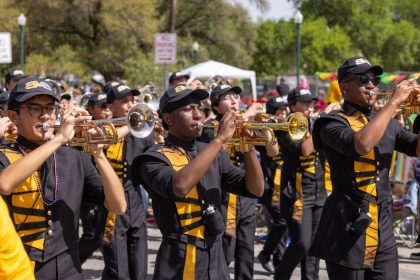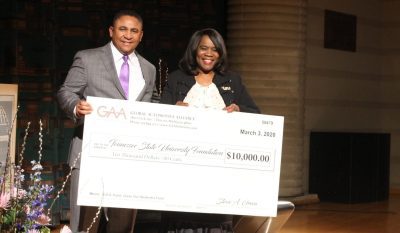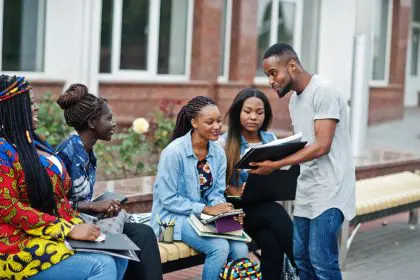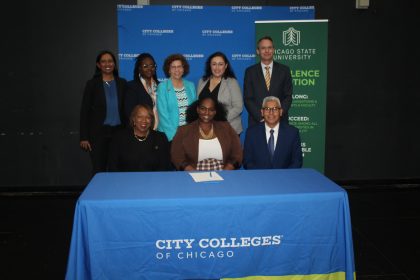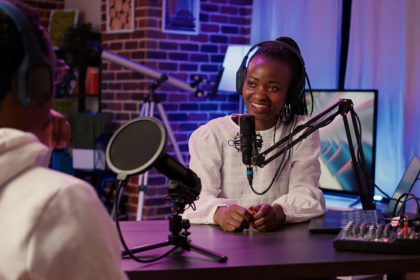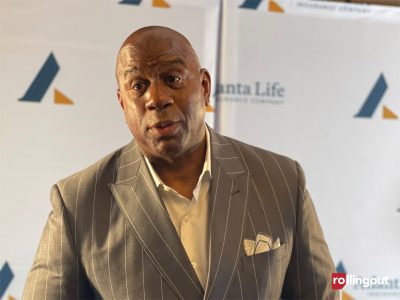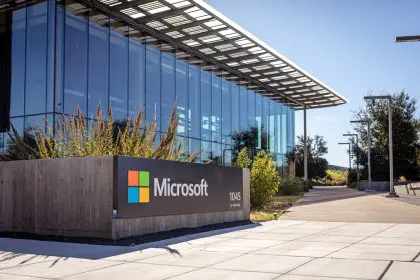In the early morning light at Atlanta’s Piedmont Park, a transformation occurs each summer. What begins as an empty greenspace gradually fills with thousands of people in collegiate t-shirts spanning every color of the rainbow, royal purple for Alcorn State, bright blue and gold for North Carolina A&T, maroon for Morehouse, navy for Howard. By 8 a.m., more than 2,000 historically Black college and university (HBCU) alumni stand shoulder to shoulder, stretching hamstrings and adjusting race bibs before embarking on a 5K that represents far more than physical fitness.
This gathering, part fitness event, part scholarship fundraiser, part “summer homecoming”, embodies the vision of Daniel Ford, CEO of the National HBCU Alumni Alliance. What began eighteen years ago as a modest 250-person event has expanded into a multi-city phenomenon that Ford describes as both a health initiative and a powerful vehicle for alumni engagement.
“We framed it as a fundraiser because it is,” Ford explains, “but in the background, it was also a way of promoting organized running, getting people comfortable with it, but doing it in a safe space within a community, with people you know and trust.”
The run/walk represents just one facet of Ford’s broader mission: transforming the relationship between graduates and their alma maters from occasional homecoming appearances to sustained, meaningful engagement that benefits both institutions and alumni themselves. His work addresses a critical need within the ecosystem of historically Black colleges and universities, institutions that have produced disproportionate numbers of Black professionals and leaders despite chronic underfunding and resource challenges.
The reluctant leader’s journey
For Ford, the path to leadership began not with ambition but with recognition of a gap that needed filling.
“It was not something I decided to do. It was something I sort of fell into,” Ford reflects. “I realized over a period of time in organizations, particularly in our community, to serve our community, the leadership that was needed, ‘How do you put together a strategy?’ and ‘How do you take that strategy and execute it into tactical objectives?’ and then ‘How do you motivate people to actually go out and do it?’, that skill set was sort of missing in certain places.”
This observation led to a personal commitment: the next time an opportunity arose to make a difference in that space, he would step forward. That moment came when Ford was asked to consider becoming an alumni association president, a role he hadn’t previously contemplated.
“I was one of those people always saying, ‘Hey, I’ll just be in the background. Just put me in the background,'” Ford recalls. “But then I remembered that commitment I made, and I said, ‘But I’ll try. I’ll do it.'”
This transition from background supporter to visible leader reflects a journey familiar to many in community organizing spaces—a progression from participant to facilitator driven not by personal ambition but by recognition of community needs. For Ford, this evolution led to his current role guiding an organization that connects HBCU alumni across the country.
A legacy of service and civic engagement
Like many HBCU graduates, Ford’s perspective on leadership and service was profoundly shaped by his educational environment at North Carolina A&T State University in Greensboro. The institution, which counts civil rights icons and former EPA Administrator Michael Regan among its alumni, embeds civic responsibility into its educational experience.
“We’re inspired every day when we’re on campus by all those who came before us,” Ford explains. “One of the things that our students get to see every day is what I affectionately call the A&T Four. Some people call them the Greensboro Four, but these were the four freshmen who in 1960 decided they were going to sit in at the Woolworth counter and started a movement.”
The ripple effects of that single act of courage were profound. “That movement spread to Nashville, Tennessee, and spread to the Atlanta University Center, and eventually it was what kicked off SNCC,” Ford notes, referring to the Student Nonviolent Coordinating Committee. “SNCC was where John Lewis and all that leadership came from, and really, SNCC is the reason we have our Voting Rights Act.”
This historical throughline, connecting campus activism to national legislation, exemplifies why HBCUs have played such a pivotal role in American social progress. It also helps explain the distinctive culture that Ford and other graduates carry with them long after commencement.
“It’s not just great you get an education, it’s great you get a great job and you’re making great money, but what are you doing to uplift the community along the way?” Ford explains. “So it’s part of the DNA. Anyone who knows anyone who comes from A&T, when we see one another, we start with ‘Aggie Pride’ to one another. It’s because it’s just embedded in us from day one.”
This ethos of service combined with pride creates a powerful foundation for alumni engagement, one that Ford has strategically built upon in his organizational leadership.
The 3 pathways to meaningful alumni involvement
When asked what specific steps HBCU graduates could take to strengthen their relationship with their alma maters, Ford offers a clear three-part framework:
Connect with organized alumni activities
“Take a moment out of their busy schedule, know everyone’s busy, extremely busy raising kids and careers and all of that, and attend a meeting or connect with someone who’s involved in what’s going on from an alumni standpoint,” Ford advises. This initial reconnection, however brief, reopens the channel between graduate and institution.
Support the next generation through giving
“Remember when they were a high school student with aspirations of going to their respective university, and how excited they were,” Ford suggests. “Knowing that there are kids just like them that have that same aspiration, just tap into that. With that, give $5, $10, $15 to a scholarship fund. You’ve got to pave the way for the next you that’s coming behind you.”
Share expertise and experience with current students
“When you go to homecoming, because I know they’re going to homecoming, carve out a little time to go back to the school you graduated from and talk to some of those faculty and see what’s going on with them,” Ford recommends. “Can you come back and talk to the students and inspire them?”
This three-pronged approach, connecting with alumni structures, providing financial support, and offering mentorship, creates multiple entry points for engagement that accommodate varying schedules, resources, and interests. The underlying philosophy is one of accessible participation rather than burdensome obligation.
“My main theme here is engagement,” Ford emphasizes. “Find your lane for engagement, and it’ll grow from there. Once you come back, you’ll realize, ‘Wow, I really miss this,’ and it’ll just go from there.”
Building community through health and collective purpose
Ford’s most ambitious initiative emerged from a recognition of Atlanta’s unique concentration of HBCU graduates. “In this city, we have the largest concentration of HBCU graduates than any other city in the country,” he notes. “So with that, we have a built-in ecosystem. We have to have a catalyst to come together.”
That catalyst has taken the form of an annual run/walk event that combines physical fitness, fundraising, and fellowship. The initiative addresses a critical need in the Black community while creating space for alumni connection.
“One of the things that we really need to promote, particularly with our alumni, is health,” Ford explains. “Health is wealth, you’ve got to take care of yourself. You can have all the money in the world, but it doesn’t mean anything if you’re not mobile and you’re going to the doctor two, three times a month.”
The run/walk concept brilliantly leverages social connections to promote wellbeing. “Proactively being healthy is the key,” Ford emphasizes. “What do we do to get people proactively healthy? We’ve got to make it fun.”
What began as a modest event has expanded dramatically over eighteen years. “Before COVID, we were trending toward 4,000 people coming together from all different HBCUs supporting HBCUs,” Ford notes. Though the pandemic temporarily shifted the event to a virtual format, it has rebounded strongly, with over 2,000 participants already registered for this year’s run at Piedmont Park.
The event’s structure intentionally accommodates varying fitness levels. “We’ve got a walk component, you ain’t got to run, you can walk,” Ford clarifies. “Our whole thing is, get the community out to exercise, get fresh air, and then get into the fellowship.”
That fellowship extends beyond the physical activity into what Ford describes as a “summer homecoming party” featuring alumni row, line dancing, scholarship presentations, food, tents, and music. This festive atmosphere creates natural opportunities for deepening institutional connections.
“This is a way that we’re able to increase our alumni membership,” Ford explains, “because you’ve got people coming in who are not active, but they’re like, ‘Hey, this is fun.’ Then, once they get in it, they’re like, ‘Oh, man, I need to join my alumni. How do I do it?'”
The concept has proven so successful that it has expanded to other cities, including Philadelphia and Washington D.C., with events coordinated to occur simultaneously nationwide.
The untapped power of alumni networks
As our conversation concludes, Ford reflects on what message he would share with new graduates entering alumni status. His advice centers on a resource many fail to fully utilize: the collective power of alumni networks.
“Do not underestimate their value as alumni,” Ford emphasizes. “They have a tremendous amount of persuasion, a tremendous amount of influence, as it relates to them collectively.”
This perspective challenges the common pattern of post-graduation disconnection. “We have a habit of, we get our degree, and we go off and we start life, and we get disconnected in a way,” Ford observes. “But to be connected to your class throughout that journey, that’s your strength, that’s your community, that’s your tribe.”
The value of this connection extends beyond nostalgia to practical professional support. “With that, you’ve got a battery behind you of alumni who came before you, who can help you navigate in spaces that you’ve never experienced before,” Ford notes. “If you look at the time we’re in right now, there are young people who are encountering things they’ve never seen before, but those of us who’ve been around for a while, we’re like, ‘Yeah, we’ve seen this move before.'”
This intergenerational transfer of knowledge and experience represents a powerful asset, one that remains underutilized in many alumni communities. Ford’s work aims to activate these connections not just for institutional sustainability but for the benefit of graduates themselves.
As the sun rises over Atlanta’s Piedmont Park this June, those 2,000-plus HBCU alumni gathering for Ford’s run/walk will embody more than institutional loyalty. They’ll represent a vision of alumni engagement that strengthens both the institutions that shaped them and the graduates themselves, a virtuous cycle of support, connection, and collective advancement that extends the educational mission well beyond graduation day.
For those inspired to connect with this movement, Ford offers simple guidance, “You can just Google ‘National HBCU Alumni Alliance,’ and that’ll take you to our national page. On that national page, you can see the different cities we’re connected with, and you can reach out to that city.”
In a landscape where HBCUs continue to produce outstanding graduates despite historical underfunding, Ford’s work represents a critical bridge, connecting institutional needs with alumni resources, and connecting graduates with the networks that can enhance their professional journeys. His model suggests that the most sustainable path forward lies not in occasional bursts of giving but in consistent, accessible engagement that becomes a natural extension of alumni identity.


